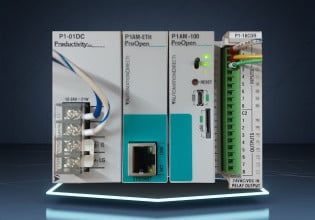Hello everyone,
i'm a mechanical engineer working as remote diagnostic for an Oil&Gas company, based in Florence, Italy. I'm going to ask some clarification about a topic treated several time on this forum; Premix mode for DLN-1 in GE units. I read many discussion about it, and one in particularly catched my attention ( leave here the link to retrive the discussion https://control.com/forums/threads/...eady-state-and-lean-lean-extended-mode.42564/ ). As you can read in the discussion, an user of this forum, talking about Premix mode in DLN-1 combustor say, quoting verbatim " ...The fuel in the Primary combustion zone is a very lean fuel-air mixture which is NOT burning with a diffusion flame; there is a temperature rise in the Primary combustion zone but there is no diffusion flame. While GE likes to say there is no "burning" going on in Premix mode, where there's a temperature rise there's combustion--but it's occurring at a much lower temperature which is what limits the formation of NOx."
This has pretty sense to me, althought i was surprised that also in Premix mode, Secondary zone worked with a Diffusion flame.
Now my questions;
1- There is any reference about this particular aspect that i can consult? Or maybe someone on this forum could be so kind to add more details?
2- In light of these considerations about the combustion w/out flame in Primary zone, could be correct refered to it as a Milde combustion?
Thank you so much to everyone.
Tommaso
i'm a mechanical engineer working as remote diagnostic for an Oil&Gas company, based in Florence, Italy. I'm going to ask some clarification about a topic treated several time on this forum; Premix mode for DLN-1 in GE units. I read many discussion about it, and one in particularly catched my attention ( leave here the link to retrive the discussion https://control.com/forums/threads/...eady-state-and-lean-lean-extended-mode.42564/ ). As you can read in the discussion, an user of this forum, talking about Premix mode in DLN-1 combustor say, quoting verbatim " ...The fuel in the Primary combustion zone is a very lean fuel-air mixture which is NOT burning with a diffusion flame; there is a temperature rise in the Primary combustion zone but there is no diffusion flame. While GE likes to say there is no "burning" going on in Premix mode, where there's a temperature rise there's combustion--but it's occurring at a much lower temperature which is what limits the formation of NOx."
This has pretty sense to me, althought i was surprised that also in Premix mode, Secondary zone worked with a Diffusion flame.
Now my questions;
1- There is any reference about this particular aspect that i can consult? Or maybe someone on this forum could be so kind to add more details?
2- In light of these considerations about the combustion w/out flame in Primary zone, could be correct refered to it as a Milde combustion?
Thank you so much to everyone.
Tommaso






